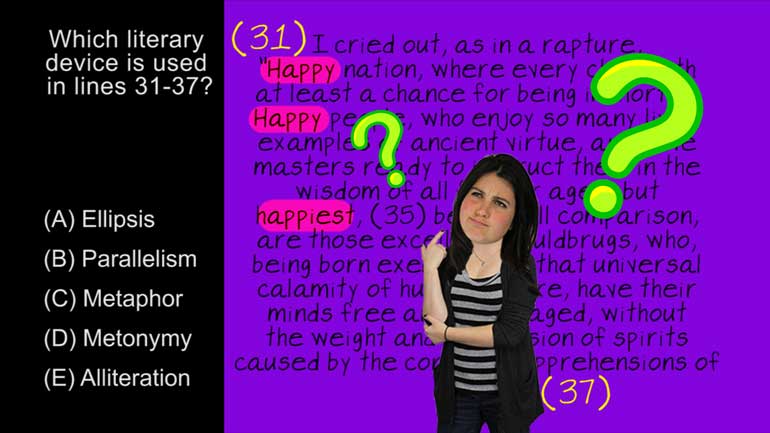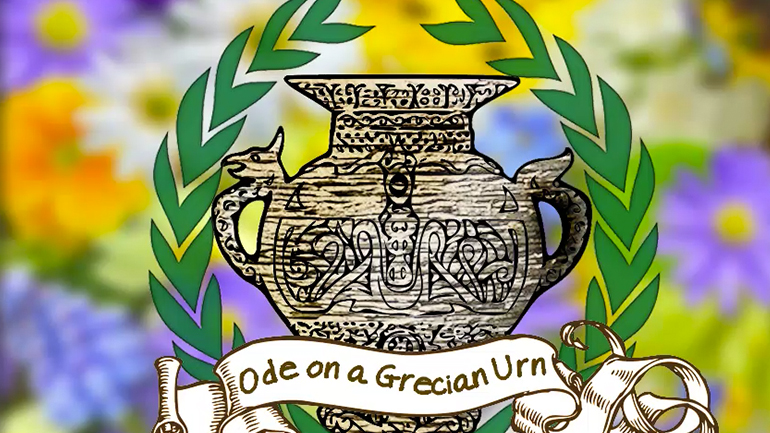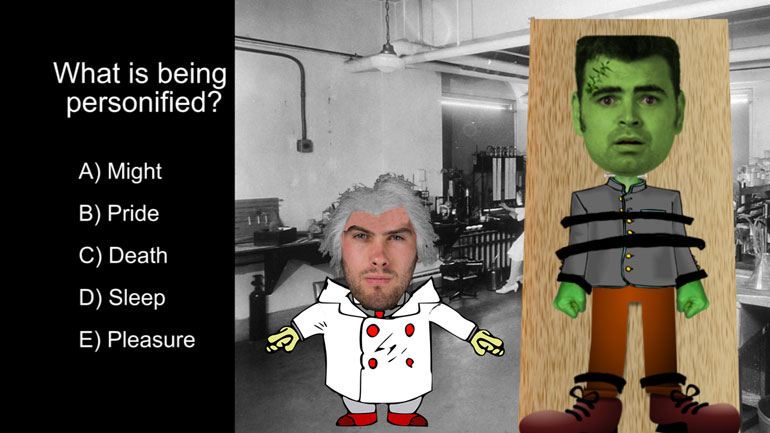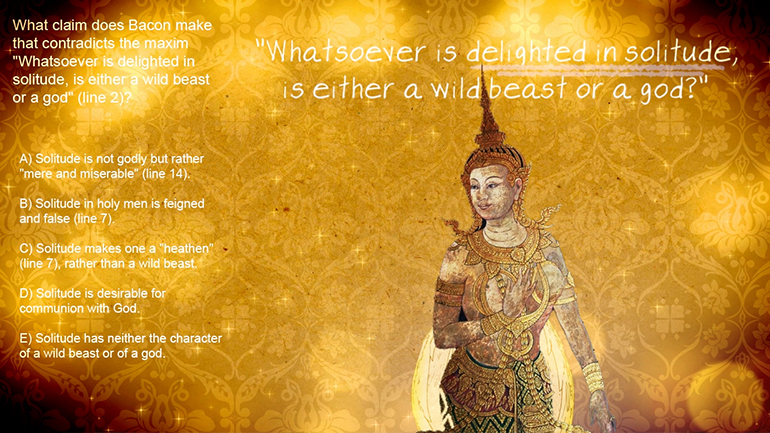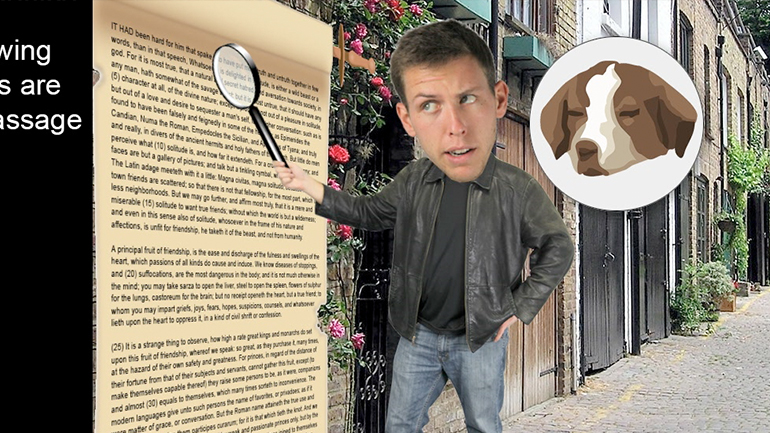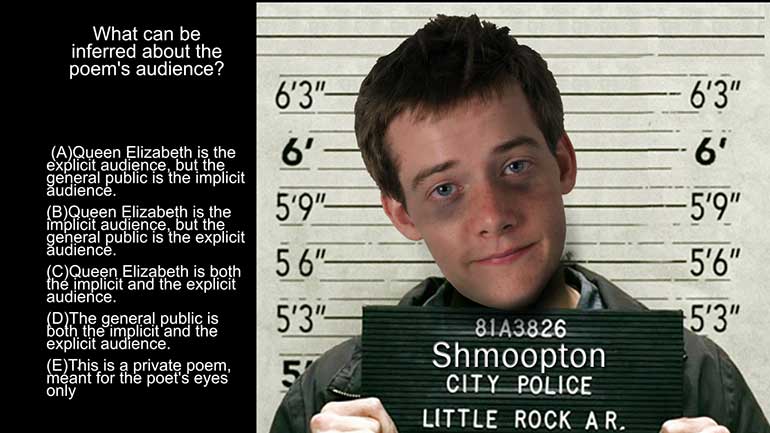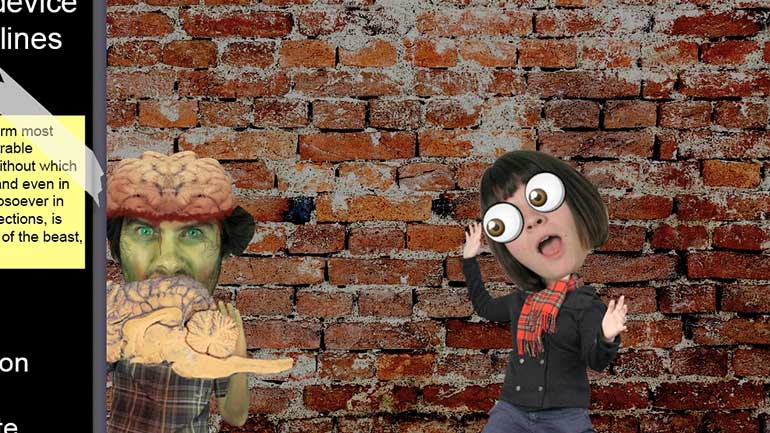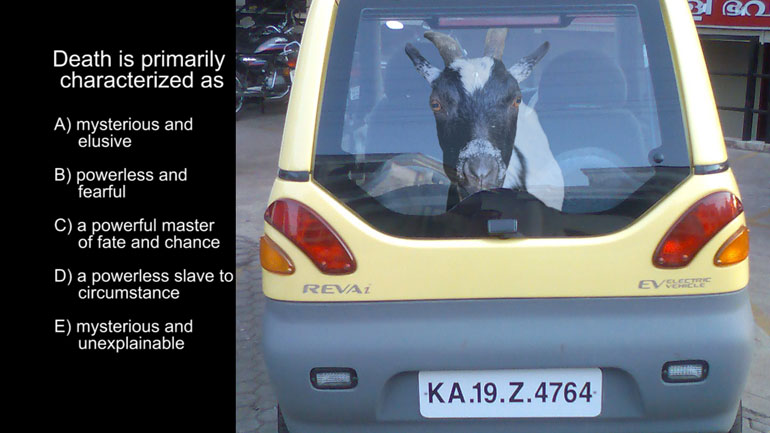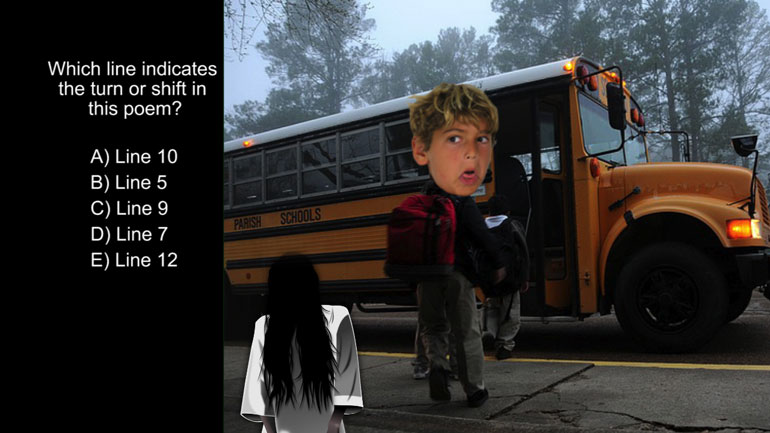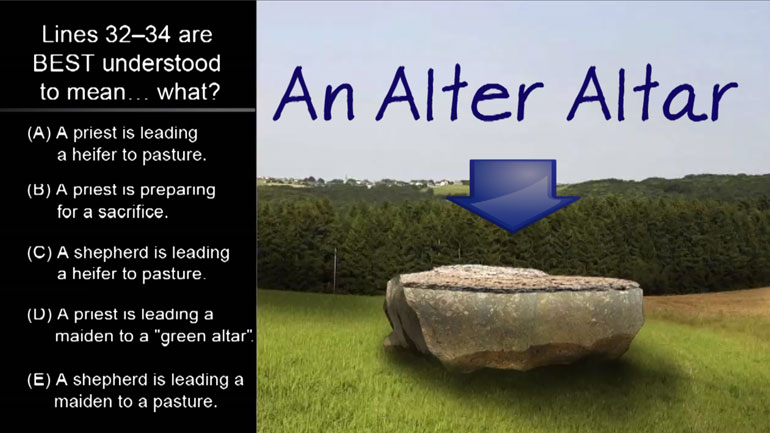ShmoopTube
Where Monty Python meets your 10th grade teacher.
Search Thousands of Shmoop Videos
Playlist AP® English Literature and Composition: Imagery and Figurative Language 13 videos
AP® English Literature and Composition Passage Drill 1, Problem 1. Which literary device is used in lines 31 to 37?
AP English Literature and Composition 1.2 Passage Drill 4. As which of the following is the object being personified?
AP English Literature and Composition 1.2 Passage Drill 5. What is being personified?
AP English Literature and Composition 1.1 Passage Drill 1 1039 Views
Share It!
Description:
AP® English Literature and Composition Passage Drill 1, Problem 1. Which literary device is used in lines 31 to 37?
- English / Imagery and Figurative Language
- Product Type / AP English Literature
- English I EOC Assessment / Influence of Traditional Literature
- Vocabulary / Demonstrate understanding of figurative language, word relationships, and nuances in word meanings
- Vocabulary / Demonstrate understanding of figurative language, word relationships, and nuances in word meanings
- Vocabulary / Demonstrate understanding of figurative language, word relationships, and nuances in word meanings
- Imagery and Figurative Language / Identifying uses of figurative language
Transcript
- 00:04
Here's your shmoop du jour... Settle into your favorite chair, hit pause,
- 00:07
and read the following passage...
- 00:25
Which literary device is used in lines 31 to 37?
- 00:29
And here are the potential answers...
- 00:33
Okay, so this question wants to know if we can define and identify each of the literary
Full Transcript
- 00:37
devices it's throwing at us.
- 00:39
Or... at least the one being used here... First let's zero in on the lines in question...
- 00:44
Lines 31 through 37.
- 00:46
So it's all the "happy this, happy that" silliness. Now... what device is being used here?
- 00:52
Let's take 'em one by one.
- 00:54
A -- Ellipsis. An ellipsis isn't just a noncommittal way to finish a sentence in an email.
- 01:00
In a narrative, it usually replaces a word or event that’s implied by the surrounding
- 01:05
text, and can be just a single dot rather than three.
- 01:09
We don't see any place in these lines where dots are being used to replace an event...
- 01:13
so let's nix A. B -- Parallelism. Ooh -- could be.
- 01:18
The speaker is talking about how the nation is happy, and then how the people are happy, and then
- 01:23
how the struldbrugs are happy... whatever they are.
- 01:27
Forgive us for jumping subjects for a moment here, but... remember parallel lines in algebra?
- 01:33
Each is its own line,
- 01:34
but each is oriented similarly to every other line that is parallel to it.
- 01:38
Same thing when talking about parallelism in literature. So B is a definite contender.
- 01:44
What about C -- Metaphor? A metaphor is a kind of comparison...
- 01:48
...and while you could compare each of the things the speaker is calling happy...
- 01:53
...he isn't doing any comparing himself. So it can't be C.
- 01:56
D -- Metonymy is out, too, because nothing in this part of the passage is being referred
- 02:01
to by something closely associated with it.
- 02:04
And E -- Alliteration -- can get scratched as well.
- 02:06
Alliteration is the repeating of sounds at the beginning of words... and we don't have
- 02:12
that here. Shucks... sure is a shame, Shmoopers. Get it?
- 02:20
So B -- parallelism -- that's our guy.
- 02:23
Sorry... we'll try to go a few more problems without bringing up algebra again.
Related Videos
AP English Literature and Composition 1.2 Passage Drill 4. As which of the following is the object being personified?
AP English Literature and Composition 1.4 Passage Drill 3. How is Burne's view of pacifism best characterized in lines 57 through 67?
AP English Literature and Composition 1.6 Passage Drill 5. Death is primarily characterized as what?
AP English Literature and Composition 1.7 Passage Drill 5. Which line indicates the turn or shift in this poem?
AP English Literature and Composition 1.9 Passage Drill 4. Lines 32-34 are best understood to mean what?
